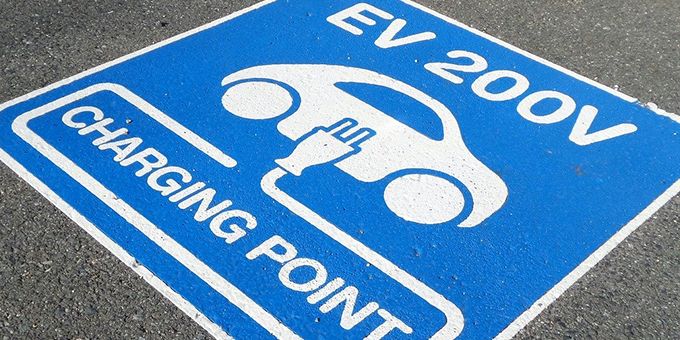Though EVs are two to three times more efficient than conventional, gasoline-powered vehicles and have no tailpipe emissions, the greenhouse gas emissions (GHG) reductions and air quality benefits they bring depend on the mix of energy generation sources on the grid used to charge them.
 EVs Only as Green as Their Grids
EVs Only as Green as Their Grids

Lori Bird and Norma Hutchinson | World Resources Institute
Please tell us a bit about WRI Energy and your role in the alternative energy industry?
World Resources Institute’s U.S. Energy Program convenes stakeholders and develops practical clean energy solutions based on rigorous analysis and deep engagement with governments, corporations, utilities, grid operators, and communities. Through its Special Clean Power Council program, WRI brought together utilities spanning 33 states and their large energy customers to collaborate on clean energy solutions. As part of this effort, we examined options for pairing electric vehicle (EV) charging with renewable energy. WRI also leads substantial EV work internationally, including electric bus projects in China and India, and work modeling the grid impacts of electric vehicle charging.
Why is it important to use renewable energy sources for EV charging?
Though EVs are two to three times more efficient than conventional, gasoline-powered vehicles and have no tailpipe emissions, the greenhouse gas emissions (GHG) reductions and air quality benefits they bring depend on the mix of energy generation sources on the grid used to charge them. In some cases, EVs could result in substantial GHG emissions or even help extend the life of fossil fuels, if charged primarily with fossil fuel-based energy. One study found that in China, EVs can contribute two to five times more smog than gasoline-powered vehicles, due to the country's reliance on a coal-fired grid.
Large energy users, particularly those with established renewable energy goals, are increasingly interested in using clean energy sources to meet new EV demand and are establishing goals to push these efforts forward. Goals may cover EV loads associated with fleet vehicles, employee workplace charging, or public charging.
How can EVs help integrate more renewable energy on the grid?
Aligning EV charging with the availability of renewable energy can also benefit the grid, particularly in areas that currently have or anticipate having large amounts of solar or wind. Programs that encourage customers to charge midday, such as workplace charging, align well with peak solar output; while nighttime EV charging can often align well with wind availability.
What type of options currently exist to pair renewables and EVs?
A variety of approaches have been used to pair EVs with renewable energy sources, but they differ in terms of how closely the renewable energy generation matches the timing of EV charging, and how customers are compensated for adjusting their charging times to help with grid management. Recent program offerings include arrangements that allow customers to charge using clean energy within a network, special utility rates that enable customers to opt for renewable sources, on-site solar facilities linked with EV charging either at work or home, and managed charging programs that control charging times and potentially link to renewable energy availability.
What are the benefits of managed charging of EVs?
Managed charging—also known as controlled, smart, or V1G charging—can enable EV charging to be paired with renewables. (V1G refers to one-way charging from the electricity grid to the EV, in contrast to V2G charging, in which the vehicle can supply energy back to the grid.) It allows customers, utilities or other third parties to control EV charging by adjusting the rate of charging to minimize charging costs, correspond with clean energy generation, or meet grid needs. Managed charging requires a communication system between the vehicle, the charger, and, in some cases, the utility (or other third party).
Managed charging offers benefits to both the customer and the utility by shifting the EV charging time according to the needs of the grid, matching the timing of renewable energy generation, or enabling customers to manage the cost of their electricity bills. Like other load management programs, managed EV charging is automated, allowing customers to benefit without having to adjust the time of charging manually. With respect to bill savings, commercial customers could manage EV charging with the objective of minimizing utility demand charges, for example. As of May 2019, the Smart Electric Power Alliance reported that 38 utility-run managed charging pilot and demonstration programs were available in the United States, of which only three programs (7 percent) offered renewable energy options.
How can EVs be paired with on-site renewable energy sources?
EV charging can be paired with on-site renewable energy generation -- typically solar energy -- for residential or commercial purposes, with or without managed charging. When EV charging is paired with on-site renewable energy, several approaches can be used. These include co-locating solar and EV charging systems, using managed charging systems to control loads and match the renewable energy generation, and integrating battery storage into the system. For managed charging situations where EV charging is controlled to match renewable energy generation, a Level 2 EV charging station can use software that manages EV charging to align it with the solar PV system output (and, in some cases, with a battery as well). Both Google and DirecTV have offered workplace EV charging for their employees that is at least partially supplied by on-site solar.
Do you see other technologies emerging that may improve or add to these processes?
Emerging software solutions can more readily enable EVs to be paired with renewables by providing real time information on the availability of renewable energy on the grid. Also, as more vehicles become equipped to operate in vehicle-to-grid (V2G) mode, they can provide energy back to the grid when needed. Under this arrangement, utilities or other transmission system operators can purchase energy stored in EV batteries during peak demand periods or use EV batteries themselves for grid services, such as frequency or voltage control. V2G can also be used as a way to help integrate more variable renewable energy on the grid, as EVs charged with solar or wind can discharge that electricity back onto the grid during times when renewable energy generation is low.

About Lori Bird
Lori Bird is Director of World Resources Institute’s U.S. Energy Program and the Polsky Chair for Renewable Energy. In this role, she focuses on decarbonization by the utility sector and large buyers, increasing grid flexibility through market design, and transportation electrification.

About Norma Hutchinson
Norma Hutchinson is a research analyst in the Energy Program at World Resources Institute. Her work focuses on the Clean Power Council in the U.S. and the Clean Energy Investment Accelerator internationally.
If you like this article you may like "Benefits of Combining EV Charger and PV Inverters"
The content & opinions in this article are the author’s and do not necessarily represent the views of AltEnergyMag
Comments (0)
This post does not have any comments. Be the first to leave a comment below.
Featured Product

